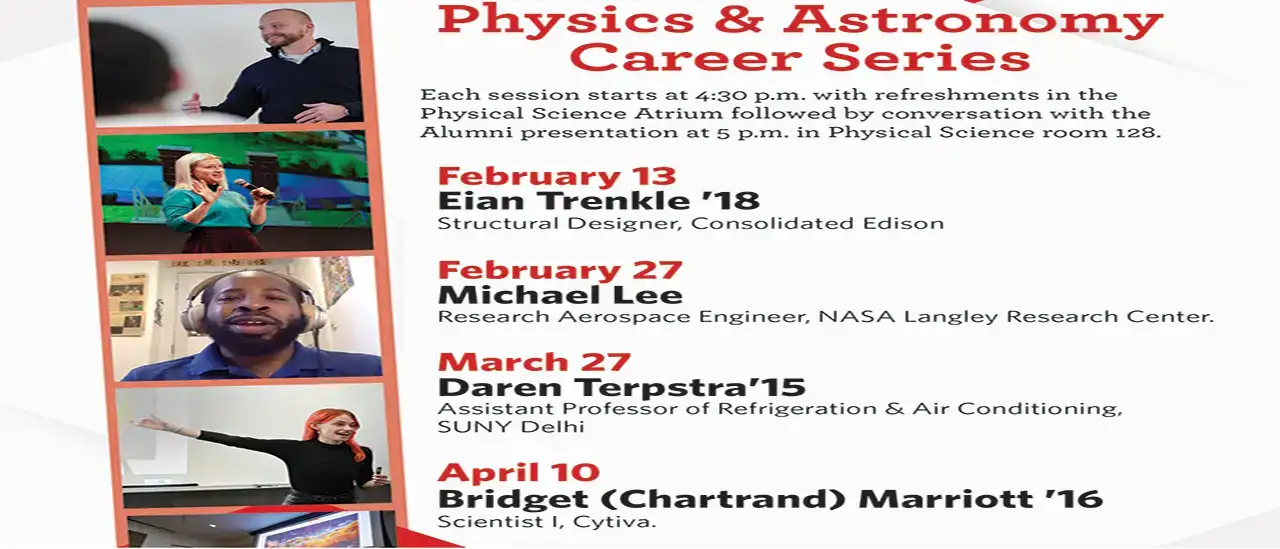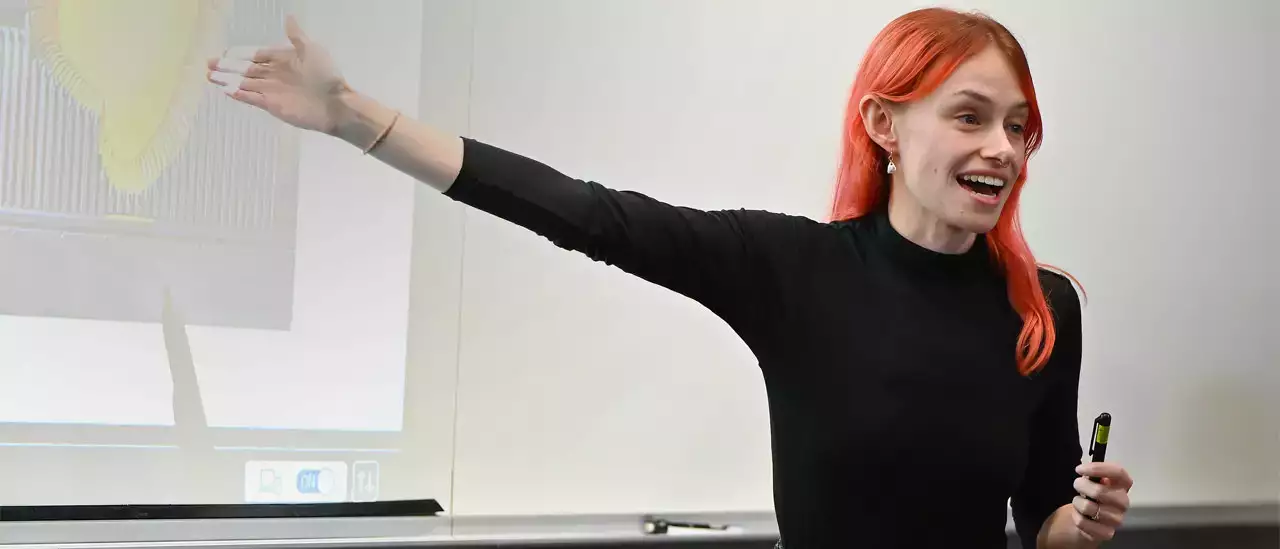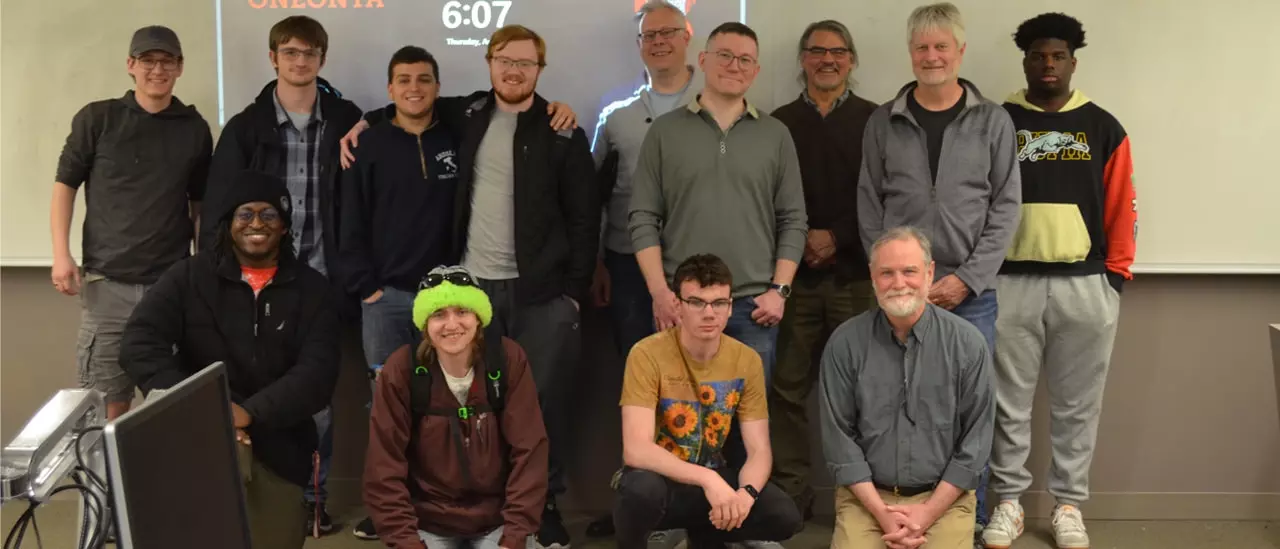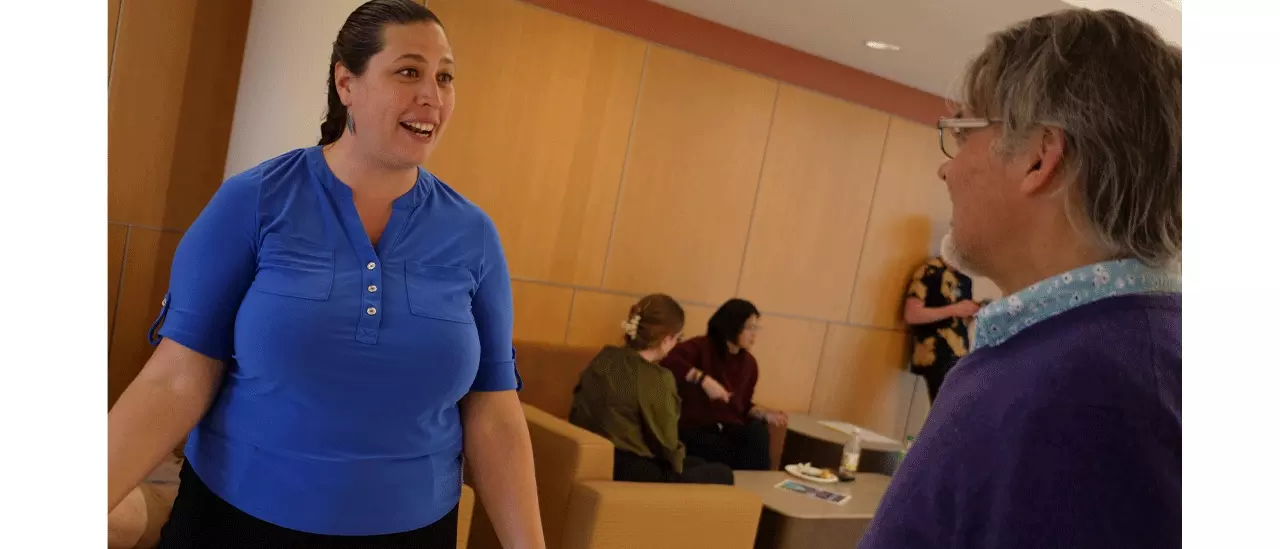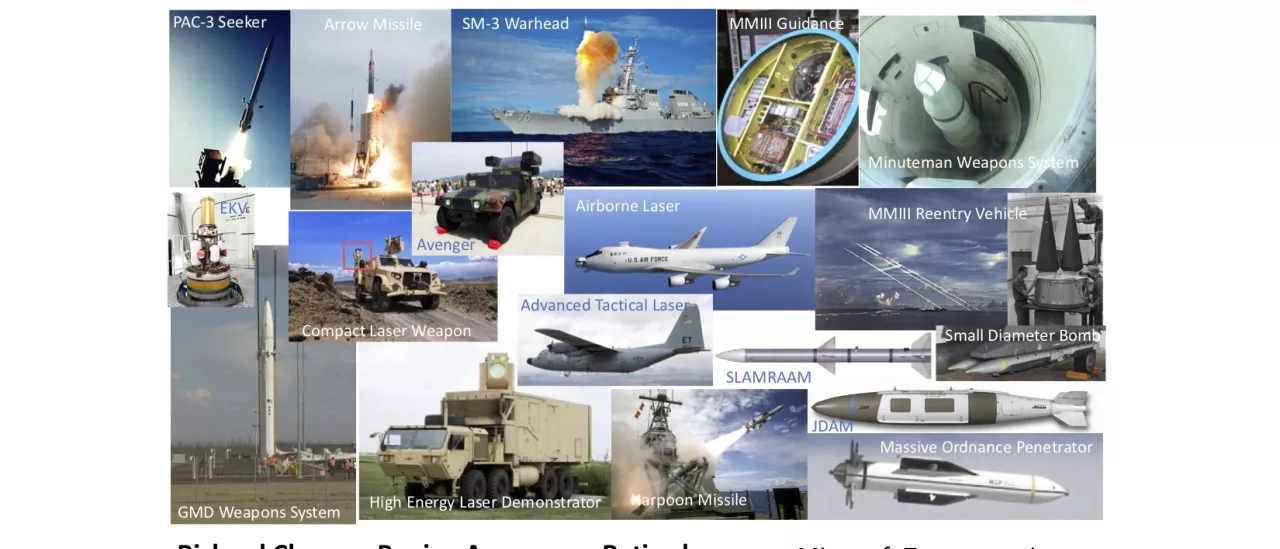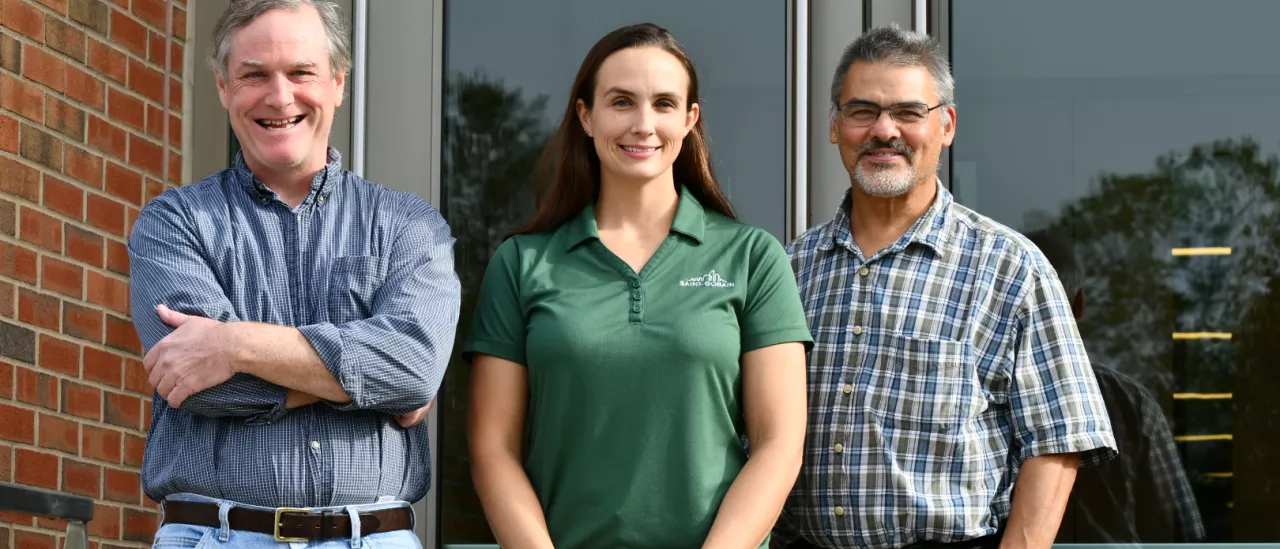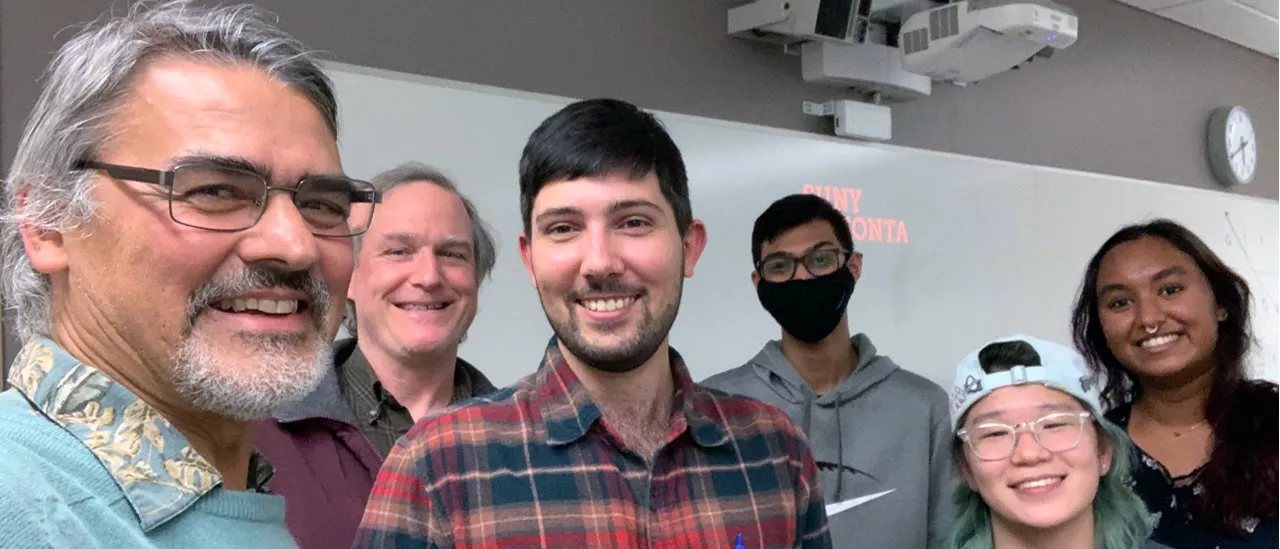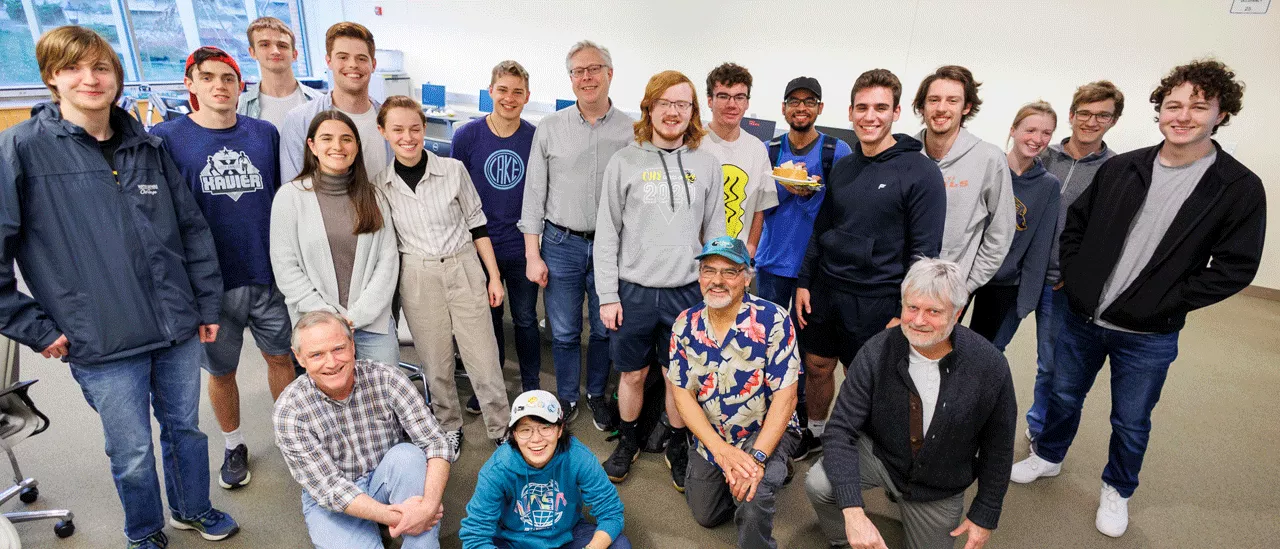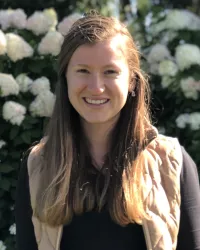The Physics and Astronomy Career Seminar was initiated so that current students could see the extraordinary science being done by alumni and the amazing and varied opportunities that await them. Moreover, we wanted them see the academic and professional preparation and attitudes that lead to these opportunities. We hope they would be encouraged by seeing that career trajectories are not predetermined but evolve and build and know that they are developing the skills they need to create their own path. The career seminar is deepening our connection to our alumni. It provides a valuable resource for future, current and former students. We are all inspired by these enthusiastic life long learners! Upcoming and past seminars are listed in reverse chronological order below.
Spring 2025 Series
- 2/13/25 Eian Trenkle: Structural Designer with Consolidated Edison
- 2/27/25 Michael Lee: Research Aerospace Engineer, NASA Langley Research Center
- 3/27/25 Daren Terpstra: Assistant Professor of Refrigeration & Air Conditioning, SUNY Delhi
- 4/10/25 Bridget (Chartrand) Mariott, Scientist I, Cytiva
Spring 2025 Seminars
Seminars are simultaneously in-person and virtual. Contact Hugh Gallagher (HughA.Gallagher@oneonta.edu) if there is seminar that you would like to attend.
Eian Trenkle is a Structural Designer with experience in civil and structural engineering. Currently employed at Consolidated Edison, Eian is involved in the design of electrical substation buildings and equipment supports, contributing to the expansion and modernization of Con Edison's $1.2 billion clean energy grid.
Prior to his current role, Eian served as an Assistant Project Engineer at Siefert Associates, where he worked closely with clients to address their construction engineering needs, including erection and bridge demolition plans, rigging design, and temporary supports. His notable projects at Siefert Associates include the George Washington Bridge expansion joint inspection and replacement, and the assembly and erection plans for the East Midtown Greenway pedestrian bridge in Manhattan.
Eian's professional journey began with internships that provided him with a solid foundation in engineering and project management. As a Ground Survey Intern at H2M architects + engineers, he gained experience in topographical surveys and drafting detailed field notes. His time as an Energy Management Intern at SourceOne Energy Management involved analyzing energy usage data for clients and conducting field visits to ensure proper installation of new electrical meters at JFK International Airport.
Eian holds a Bachelor of Science in Physics from SUNY Oneonta and a Bachelor of Science in Civil Engineering from Rensselaer Polytechnic Institute of Technology. He is a licensed Professional Engineer in New York and an active member of the American Society of Civil Engineers (ASCE).
Eian will be presenting on his journey in engineering, focusing on lessons learned from both his academic and professional experiences. He will highlight the importance of networking and the significant role internships have played in his early career.
Presentation Topics
Starting with my academic and professional experiences, I've realized the immense value of discipline, critical thinking, and collaboration. My education in civil engineering and physics laid a strong foundation, while my roles at Consolidated Edison, Siefert Associates, and other organizations reinforced the importance of teamwork, project management, and strict adherence to safety standards.
Networking has been a cornerstone of my career development. Building professional relationships has not only opened doors to new opportunities but also provided invaluable support and insights. It's not just about meeting new people; it's about creating meaningful connections that can foster both personal and professional growth.
Internships have also been crucial in my development. These hands-on experiences allowed me to apply theoretical knowledge in real-world settings, providing a comprehensive understanding of engineering projects and enhancing my adaptability. Working at places like H2M architects + engineers and SourceOne Energy Management equipped me with practical skills and valuable experience that have been instrumental in my professional growth.
Michael W. Lee
NASA Langley Research Center
Abstract
The Space Launch System (SLS) experiences all manner of flow regimes as it carves through the
atmosphere. Despite its millimeters-thick skin, the Artemis I vehicle withstood hurricane-force winds
before ascending almost exactly along its nominal trajectory to orbit. This victory of model-based
design lends credence to the rigor with which the rocket physics were predicted. With such a complex
system, individual researchers must focus on individual phenomena, which can then be compiled into
a comprehensive model. But due to that same complexity, individual phenomena can be difficult to
extract from the whole. In this talk, we will discuss two case studies in which an understanding of the
root aerodynamics directly informed rocket flight readiness: one on multiple stable flow states at
prelaunch conditions and one on identifying a coherent data space for the booster separation event.
Bio
A 2016 graduate of Clarkson University and a 2017 and 2020 graduate of Duke University, Dr.
Michael Lee’s research spans applied aerodynamics, fluid physics, and data fusion. In his current role
as the uncertainty quantification lead for the NASA Space Launch System aerodynamics task team,
Lee performs both design and simulation support for the next generation of interplanetary launch
vehicles.
Daren Terpstra earned a B.S. in Physics from SUNY Oneonta in 2015. He subsequently earned an M.A. in Teaching from Clarkson University. After three years of teaching chemistry, physics and middle school science in a K-12 school, he was approached by SUNY Delhi to teach courses in the Refrigeration Department. He currently teaches 2 lectures and 1 lab in the fall semester and 1 lecture and 2 labs in the spring. During the summer, he works at Osterhoudt Commercial Refrigeration in Oneonta. His presentation will examine how heat pumps work and the essential components of most basic heat pumps. He will share some jobs that he has completed and experience he has in the technical field of refrigeration.
Past Seminars
MIT, Lincoln Labs
Hannah Olds graduated from SUNY Oneonta in 2019 with a degree in Physics. Hannah used her experience securing REUs at Notre Dame and Michigan State to write a comprehensive guide on finding REUs that remains a great resource for SUNY Oneonta students. After graduating in 2019, Hannah moved to North Carolina, throughout England, and finally to Scotland. Each move meant the pursuit of a new career; from being a PhD student, to training with the British Army, to working for the NHS. While in Edinburgh, she discovered medical physics and was inspired to learn to use her physics background in a healthcare setting. In August 2024, Hannah completed her MSc in Medical Physics from the University of Aberdeen. This talk will briefly discuss major fields within medical physics, review Hannah’s MSc thesis research, and highlight opportunities current Oneonta students can take to make the most of their experience.
Mike is a member of the Instruments division at the Space Telescope Science Institute. He will discuss his work on an observing program on the James Webb Space Telescope to search for distant Type Ia supernovae. These exploding stars are used by astronomers as standard candles to map out distances in the Universe because we understand how bright these objects are at the source, and we can use their apparent brightnesses to determine the distances to the galaxies where they happen. Mike is on a team that also involves SUNY Oneonta that is using the James Webb Space Telescope to build a sample of Type Ia supernovae that are found at distances greater than most of these explosions have been detected in the past. From this, we anticipate learning about the structure and evolution of the Universe, as well as the natures of the galaxies from which supernovae arose earlier in the history of the Universe, and we will also learn more about stellar evolution in the process.
Andrew Lutz, Ryan Sliwinski, Benjamin Curcio, Jacson Wolfe, Michael Giannetto, Julia Busemeyer, Skyler Reed, Lucathony Angrand.
Ray graduated in Spring 2015 with a 3.89 GPA after completing his option A physics degree. He also minored in mathematics and astronomy during his studies at SUNY Oneonta. Since graduation he held jobs with GlobalFoundries, Regeneron Pharmaceuticals, and the Naval Nuclear Laboratory. In his spare time, Ray enjoys hiking, walking his two dogs with his wife and son, pallet DIY, improving his home/property, and general family activities.
Presentation Talking Points:
- Who am I? Share some personal pictures, passions, and my journey.
- Ice Breaker: How are you all feeling about graduating? Share some of my anxieties about graduation.
- Expand the short bio: Share my experiences at GlobalFoundries, Regeneron, and the Naval Nuclear Laboratory.
- Missed opportunities during my time at SUNY Oneonta.
- Skills/Knowledge I developed at SUNY Oneonta that translated to industry.
- Concluding Remarks: Advice for first interview.
Dr. Joshua Nollenberg is an Associate Professor in the Department of Physics and Astronomy. You can read more about him on our Faculty & Staff page.
Mitchell earned his Bachelors Degree in Physics from SUNY Oneonta in 2021. Despite the turbulence of the pandemic, Mitchell was highly productive completing the suite of engineering coursework, participating in independent research and engineering projects and leading the Physics and Astronomy Club. From 2021 to 2023, Mitchell studied mechanical engineering at the Watson College of Engineering at Binghamton University earning a Bachelors Degree in 2023. Following his long-standing interest in sustainable energy, Mitchell led an interdisciplinary engineering team at Binghamton University that developed a small wind turbine to be mounted on a highway median and harvest energy from traffic induced wind flow. In addition to describing the wind turbine engineering project in detail, Mitchell will reflect on how his time at SUNY Oneonta and Binghamton University and how it prepared him for his current position at Constellation Energy.
Peter received a B.S. in Physics and Computer Science with a minor in Mathematics from SUNY Oneonta in 2011. He then went on to study low energy string theory and received a Ph.D. in Theoretical Physics from Purdue University in 2017. Peter now works at Northrop Grumman as an experimental physicist, focused on research and development for superconducting technologies. He is also the captain of the Baltimore Flamingos Rugby Football Club, Maryland's first gay and inclusive men's rugby team.
Peter is excited to walk you through his somewhat random and extremely lucky journey to where he is today. He started out at SUNY Oneonta with a set of much needed mentors, numerous research and internship opportunities, and the Oneonta Rugby Football Club as his community. He went from struggling through GRE prep to almost bailing on graduate school because of a successful iPad sales app. In grad school, he tried his hand at experimental biophysics and theoretical astrophysics before finally making his way to string theory. He made his first real international trip with his now wife, Mridula, and never stopped traveling. When it was time to graduate, he grudgingly applied for exactly one job, realized during the interview how badly he wanted it, and thankfully got the offer. He moved to Raleigh upon graduating, where he learned digital signal processing and became a sailing amateur. His next rotation brought him to Baltimore, where he picked up superconducting physics, quit sailing, and rediscovered his love for rugby. Looking back at those years at SUNY Oneonta, Peter feels a mix of gratitude, relief, and wonder at his journey over the past 13 years.
Josh Vanderpool, 3-2 Physics Engineering class of '05. BS Electrical Engineering from Binghamton University. Early career began as an Electrical Design Engineer at Universal Instruments with lots of opportunities and rapid growth honing skills for custom electronics design, inclusive of programmable logic controllers, Microprocessors, and high speed digital design. Through the years continuous education and learning has helped grow my career and keep apprised of current and emerging technologies. While at Raymond Corporation Josh completed his MSEE with computer Hardware Engineering focus and became the supervisor of the Custom Electronics Engineering group. Josh has continued his career aspirations at BAE Systems Inc., Controls and Avionic Solutions group, continuing his work on progressive technologies in the pursuit of solutions.
Josh’s talk will walk through his education and career and provide some insight/reflection on sticking to work that is enjoyable and keeping to one's values in the process.
Shaun earned his BS in Physics from SUNY Oneonta in 2005 and later went on to earn his MS in Civil Engineering from Florida Atlantic University in 2011 and EdD in Curriculum and Instruction from the University of Florida in 2019.
Shaun has been in the field of education since 2007, working with diverse age groups ranging from middle schoolers to adults. He has lent his expertise to two public high schools, three independent schools, and three higher ed institutions, including the University of North Carolina at Chapel Hill, the University of Florida, and Skidmore College. He has taught nearly 30 different courses spanning the fields of physics, math, and computer science, while also taking on roles including Director of Educational Technology, Department Chair, Course Developer, and Instructional Technologist.
Apple has recognized Shaun as an Apple Distinguished Educator, a distinction granted to fewer than 4,000 educators worldwide over a quarter of a century. He also spent several years speaking at conferences for notable organizations, including the International Society for Teaching in Education, the Future of Education Technology Conference, and the Computer Science Teachers Association.
Rachel Sardo graduated from SUNY Oneonta in 2005 with a bachelor's degree in physics. She then went on to study at Binghamton University receiving a master's in applied physics after writing a thesis on the Anomalous Effects of Cooling Liquid Water. After receiving her master's, Rachel worked as a Water Ecologist at the NYC Department of Environmental Protection for two years.
After working at the DEP, Rachel pursued a teaching career, landing a job at one of the Specialized High Schools in the NYC public school system which serves over 6,000 students. She loves teaching AP Physics I and Regents Physics to future scientists and engineers.
Ben earned his BS in Physics from SUNY Oneonta in 2020. During that time, he developed an affinity for computational modeling of physical phenomena. This culminated in a research project in which he used finite difference techniques to solve the wave equation for water waves in an enclosed basin. However, Ben also had a strong interest in investment and finance. Upon graduation, Ben decided to merge his interests in finance and computational and mathematical modeling by enrolling in the Applied and Computational Mathematics MS program at RIT. In May 2022, Ben successfully defended his master’s thesis and graduated from RIT with an MS in Applied and Computational Mathematics. Last summer, Ben was an intern at Kroll Bond Rating Agency (KBRA, https://www.kbra.com/) in NYC as a Quantitative Modeling intern. After completing the internship, he joined Kroll full time as a Senior Analyst with the Project Finance team. KBRA rates fixed income securities and does fixed income research.
Sharing examples from his master’s thesis, Ben will reflect on how his experience in physics at SUNY Oneonta prepared him for a program in applied and computational mathematics. He will also discuss the principles and importance of networking in one’s career trajectory.
Jake received his BS in physics, astronomy and mathematics from SUNY Oneonta in 2018. Currently he works as an Engineering Project Manager at ISL Products International Ltd., in Melville, NY. This company manufactures what Jake classifies as electro-mechanical components, with the main focus being in DC electric motors, various audio products, and ballasts for UVC disinfection. Jake's talk will be centered around his personal experiences and career as well as some advice on how to navigate life in and after college.
Mr. Scheer '83 completed the 3-2 Engineering Program at Clarkson and went on to Hubble and IBM. He is currently a patent attorney working out of New York City.
Areas of Interest: High Energy Phenomenology, Astrophysics, Particle Physics, Bayesian Statistics, and Cosmology
Nathan received his B.S in Physics and Mathematics from SUNY Oneonta in 2019. After working as an account manager at Coca-Cola for a year, he went on to pursue a physics PhD at the University of New Hampshire. He will discuss his current work on asymmetric dark matter and neutron stars and describe how his experiences at Oneonta prepared him for such research. He will also reflect on his experiences of his first two years of physics graduate school and conclude with key takeaways. Outside of graduate school, Nathan enjoys volunteering at the McAuliffe-Shepard Discovery Center, watching anime and documentaries, and spending time with his dogs, Brandi and Bo.
Areas of Interest: Robotics, Machine Learning, Computer Vision, and Physics
Jose earned a B.S degree in Physics from SUNY Oneonta in 2019 and a M.S in Mechatronics and Robotics from New York University in 2021. Currently, he is part of ChemBio Diagnostics where he works as an Automation Engineer. He troubleshoots electro-mechanical equipment, maintains vision systems, and performs upgrades/updates to automated lines. During his free time, Jose enjoys working out, coding, prototyping, and most importantly hanging out with his friends.
Jose will share how his passion in physics and robotics began including the lessons learned throughout his college career while also discussing his current work as an engineer. Jose became interested in robotics and science in his early childhood, where he built robots using Lego-like toys and found science fiction fascinating. This fascination helped him pursue physics at SUNY Oneonta and robotics at NYU. Jose is now employed as an automation engineer in the medical device industry. He uses computer vision, SCARA robots, and feeding mechanisms to manufacture medical devices. He will discuss the relevance of these technologies in manufacturing and how they ensure high quality production.
DENNIS HIGGINS taught mathematics and computer science at the University of Scranton, St. Lawrence University, and, for most of his career, at State University College of NY at Oneonta. He has been involved in regional energy issues for over a decade.
KEITH SCHUE has a master’s degree in engineering and worked in the private sector for fourteen years in hardware design. Since 2010, he has been engaged in New York energy policy, and has provided technical input on the federal Clean Power Plan, NYS Energy Plan, NYS Clean Energy Standard, industry regulations and legislation. He has won an award for his work to block a fossil fuel plant that would power Albany Plaza.
VINCENT COULEHAN has a BS in nuclear technology and an ME in mechanical engineering. He has worked over 43 years in the power industry, with more than 20 years as a manager and supervisor. His experience covers a broad spectrum of Operations, Engineering, and Project Management for commercial nuclear power plants. His employment included ConEd, and Entergy. Vincent worked at Indian Point, where he received a reactor operator's license.
Although the Climate Leadership and Community Protection Act aims to achieve a carbon-free grid by 2040, in the Act's first two years, New York has instead increased its dependence on fossil fuels for electricity. State decarbonization plans include hundreds of square miles of solar panels, thousands of wind turbines on land and offshore, massive transmission buildout, giant batteries, and dispatchable backup generation equal to the capacity of New York's existing fossil-fuel power plants. California and Germany have spent billions on renewables but have made little progress in curbing fossil-fuel use. Here, in New York, opposition is growing to the accelerated siting of industrial-scale solar and wind projects which consume forests and farmland but produce little energy. Maybe instead of pursuing a flawed energy plan that sacrifices ecosystems, increases energy costs, and fails to achieve climate goals, we can find a better way.
Astronomy has entered a new era with the successful launch and commissioning of the James Webb Space Telescope. As the data begins to roll in, scientists are already making new discoveries, and the world has seen a beautiful new perspective of our Universe. We'll take a look at commissioning this massive space observatory through the lens of the Mission Operations Center in Baltimore, and then discuss in depth its earliest images and scientific results.
Areas Interested: Physics, Engineering, Computer Science, Music, Adolescent Science Education
Mike’s talk will be centered around how he approaches teaching to different audiences and how his experiences in each setting influenced his overall approach to education. He will discuss his journey in bringing computer science to a school district where there was no presence and how it morphed into an avenue to bring his teaching worldwide.
Being an educator requires knowledge in your content area but more importantly, knowledge in the students you serve. Mike Eramo, a 2012 SUNY Oneonta graduate in Physics and Education and New York State Master Teacher is well versed in the variety of learning and learners that one encounters as an educator. He has taught physics, computer science, and a variety of other subjects at the high school level for the last 10 years. He has served as an adjunct lecturer in the SUNY Poly mathematics department for 6 years. He also is an online instructor found on platforms such as Udemy and Packt teaching self-paced learners in a variety of courses including electronics, computer science, and cyber security where he has over 200,000 students enrollments from all over the world. In each level of instruction, Mike quickly noticed a need to bring computer science to the forefront of his teaching, often bringing a first exposure to many of his students. Mike has worked to weave relevant and engaging material into the core of his teaching, regardless of the subject or level, that helps give students a sense of confidence and ownership in the knowledge they walk away with. Results have led to students changing college majors, adults landing development jobs, and even students starting their own video game company!
Areas Interested: Physics, Engineering, Mathematics, Computer Science
Areas Interested: Physics, Astronomy, CS-Math-Statistics, CGP
Known in smaller circles as the “Star Lord of Las Vegas,” Nick Juliano ’15 leveraged a cacophony of talents gained in his wonderful years at SUNY Oneonta to advance his professional and academic careers simultaneously.
While he is currently the Program Manager for the College of Southern Nevada Planetarium and an astrophysics graduate student at UNLV, Nick’s first year after earning his undergraduate degree was far from ideal. The first half of this talk will detail how he utilized the skills he gained at SUNY Oneonta to transform rapidly declining career prospects into a thriving symbiosis of career and academic growth. An emphasis will be placed on how non-traditional academic trajectories can often provide quality-of-life improvements over traditional ones.
The second half of this talk will provide an overview Nick’s graduate research: automating the detection and characterization of exoplanets using radial velocity and transit techniques simultaneously. By integrating the well-understood principles of kinematics and dynamics with machine learning techniques, his code will sift through the large backlog of data from the Kepler Space Telescope and W. M. Keck Observatory to generate new findings automatically. His academic genealogy traces back to Albert Einstein and his research collaborators include members of the TRAPPIST-1 team.
Areas Interested: Physics, Engineering Earth and Atmospheric Sciences, Mathematics, Computer Science, Environmental Science
Melissa will talk about her experiences transitioning from an undergraduate to graduate program, particularly in regards to research. She will give insight into how decisions and opportunities at SUNY Oneonta prepared her for the future. Melissa will also discuss the field of ocean engineering in a general sense and her current research project investigating sediment transport processes through field experiments and ‘homemade’ instruments. She hopes to provide current students with a greater understanding of options to apply their coursework in areas that are meaningful to them.
Melissa received her B.S. degrees in Physics and Mathematics in 2019 from SUNY Oneonta. She then enrolled in a graduate program in Ocean Engineering at the University of New Hampshire, where she is currently working towards a PhD. Her research interests include sediment transport, nearshore processes, and coastal resiliency. In her free time, Melissa likes trying new recipes, traveling, running, and being outside.
Areas Interested: Physics, Engineering, Chemistry, Earth and Atmospheric Sciences, Mathematics, Computer Science, Environmental Science.
Mike Sander received his B.S. degree in Physics from SUNY Oneonta (2002-2005), and BS degree in Mechanical Engineering from Binghamton University (2005-2008) through the 3-2 engineering program offered through SUNY Oneonta in cooperation with other NY State Universities. Mike has spent his career focused on sound physics and mechanical engineering principals and applying them through hands on engineering, prototyping, and design thinking. Mike began his career at Atlas Copco in 2008 as an Air and Gas compressor Designer, Lead Engineer, and Project engineer before following his interests in renewable energy to a position at General Electric. In 2011 Mike began his career at GE as a Lead Battery Design/Packaging engineer, working on sodium metal battery technology in the telecom, UPS, locomotive and mining applications. In 2015 Mike moved to the Onshore Wind Energy group at GE in the services segment as a Fleet Support Engineer and quickly moving on to a new role as the Senior Leader at the Onshore Wind Repair Development Center – an engineering center of excellence where solutions to the wind industries most challenging repair and installation solutions are developed. Mike will be discussing how his unique (and maybe non-traditional) skill sets and background have impacted his ability to thrive in challenging engineering environments, especially in new technologies and rapidly growing industries, focusing on the wind industry.
Areas Interested: Physics, Engineering, Electronics, Theater
After graduating in 2014, Russell started on a path that eventually led him to becoming an engineer at IBM. His path getting there was not straight, nor clear – working as a stagehand building Broadway theatre sets before going to grad school. His work experience and education fortified his skillset to succeeding in his current role developing assembly processes for future high end server processors. He will reflect on how his career path took shape and how the skills he developed along the way made him into the engineer he is today.
Russell graduated from SUNY Oneonta in 2014 with a BS in Physics and worked in the Theatre and Live Events industry. He went back to school at City College of New York and went on to earn a MS in Mechanical Engineering in 2018. Following an internship, he was hired full time at IBM as an engineer where he continues to work today. His current role focuses on assembly process development for future high end server processors. Russell lives in the Hudson Valley with his wife, Caroline, and dog, Harry. He enjoys all the hiking and mountain biking the area has to offer.
Christian Trapani (SUNY Oneonta 2015) will be visiting us in person. Christian has been a Systems Test Technician at CVD Equipment Corp, Research and Development Engineer at Collins Aerospace and a Senior Electrical Engineer at General Dynamics Mission Systems. Starting next month he will begin working as an Advanced Electrical Engineer at the Naval Nuclear Laboratory Kesselring Site. He will discuss some of the more interesting projects on which he has worked and the most important aspects of his academic and professional preparation.
Additive manufacturing enables geometries optimized for performance while avoiding restrictions imposed by traditional (subtractive) machining of metal. At small scales, however, there is no established fabrication technique that meets all desired specifications for shape flexibility, feature resolution, placement fidelity, and material properties. Among the candidate techniques, electron beam induced deposition (EBID) has unparalleled size resolution, both for placement and feature dimensions, and the ability to generate arbitrary shapes that are difficult or even impossible by many other additive techniques. EBID has been used to develop nanoscale structures for plasmonics, nanoscale templating, field emitters and contacts to nanoscale objects. However, the primary disadvantages of EBID are poor growth rates, low target purity and little ability to tailor deposit structure. Using a custom-built cryogenic stage, we have demonstrated growth rates 4-5 orders of magnitude higher than conventional EBID, with morphological and placement control. The resultant materials are relatively compliant, composed to metallic nanoparticles in a carbonaceous matrix whose bonding can be manipulated through subsequent electron irradiation. The exposure process was modeled by Monte Carlo simulations of electron-condensate interactions, which were used to develop two approaches for the fabrication of three-dimensional self-supporting structures with incorporated gaps. This design flexibility, combined with the reasonable deposition speeds, offers utility in fields beyond those accessible by traditional EBID, including applications in catalysis, biosystems, and in-situ device fabrication.
Biography:
Dr. Kathleen Dunn is an Associate Professor of Nanoscience in the College of Nanoscale Science and Engineering at SUNY Polytechnic Institute. She received her B.S. in Applied and Engineering Physics from Cornell University and her Ph.D. in Materials Science from the University of Wisconsin with a specialization in electron microscopy. Her current research focuses on structural and chemical inhomogeneities in advanced materials: how they can be induced, suppressed, and manipulated to generate desirable properties. She has received the CNSE Hermes Award for excellence in graduate teaching seven times, a SUNY Poly Women Who Inspire Award, and the SUNY Chancellor’s Award for Excellence in Teaching.
After graduating in 2017, Kimmy went on to pursue a PhD at Yale University, where she currently works on computational particle physics. She will reflect on how her experience at Oneonta prepared her for research at Yale, and describe her current research topic of Stealth Dark Matter. She will also discuss how she is preparing for her career after graduation, focusing on her interest in applying her skills and experiences from Yale to a broader context of science policy and leadership.
Recording coming soon!
Tim received a B.S. in Physics from SUNY Oneonta in 2012 and a B.S. in Electrical Engineering from R.P.I. Following an internship at MIT Haystack Observatory and a stint designing antennas for Electro-Metrics in Johnstown, New York, Tim joined Taoglas USA Inc. in 2015. He is now the primary R&D lead for San Diego office designing, simulating and testing new standard products including antennas, printed circuit boards and microwave devices. He holds numerous patents for new antenna technology and mentors new engineers on antenna development practice and procedures. His work has included antenna designs for the Internet of Things market, enabling 5G/4G cellular, GPS, and WiFi connectivity for various applications.
Many physics students take a typical career path consisting of getting an undergraduate degree, going to graduate school, then taking a job as a post-doc/professor or entering the tech industry. But have you ever considered a career in education or science communication? As college students, you know that skilled professors who are good at communicating tough science concepts are key to you succeeding in getting your degree. But there are many other education-related career paths you could follow besides becoming a professor. You could be a science writer, planetarium or museum educator, K-12 science teacher, or work for a company that provides educational products to schools. In this talk I’ll share stories about how I learned I wanted to become a science educator, my career journey so far in life, and my current research and outreach projects that students can get involved in. By the end of the talk, you’ll have a better idea of what it’s like to teach science to the general public, and hopefully be inspired to share some of your physics knowledge with the rest of the world.
Dr. German provided an overview of current research in Biomedical Engineering and the opportunities in Biomedical Engineering at SUNY Binghamton.
Rich Choppa ’83 is the President of DellaCioppa Inc., an Aerospace and Defense Consulting firm. In 2020, he retired after 17 years as an executive at Boeing - Program Director for Intercontinental Ballistic Missile (ICBM) Sustainment Programs and former senior director of Global Sales and Marketing for the company’s Missile & Weapons Systems division. In those roles he supervised Boeing engineers and sales professionals for all weapons systems: bombs, rockets, missiles, laser weapons, missile defense systems and United States’ strategic deterrence systems. Choppa joined Boeing in 2003 as program manager for Missile Defense International Programs. Before joining Boeing, Choppa served 21 years in the U.S. Army, retiring as a lieutenant colonel. He served as a forward observer, fire support officer, and commander in Ranger and Airborne units with multiple worldwide deployments, as a Russian Foreign Area Officer throughout the former Soviet Union, and as a policy director in the Office of the Secretary of Defense. He holds a bachelor’s degree from SUNY Oneonta in European History and a master’s degree in Russian Studies from Indiana University at Bloomington. Choppa resides in Huntsville, AL (aka ‘Rocket City’), home to the U.S. Space & Rocket Center, NASA Marshall Space Flight Center, NASA Marshall Space Flight Center, Redstone Arsenal and Cummings Research Park.
Amanda Madden received her B.S. degrees in Physics and Mathematics in 2010 from amazing SUNY Oneonta. From there, she enrolled in the graduate Physics program at the University of New Hampshire (UNH). Her studies at UNH involved the experimental, software, computational, and simulation development of an instrument to detect neutrons and gamma-rays from illicit material at a distance, funded by the Department of Defense’s Defense Threat Reduction Agency . She received her PhD in 2015 for this thesis work titled: “An Imaging Neutron and Gamma-ray Spectrometer.” From New Hampshire, Amanda moved to New Mexico for a postdoctoral appointment at historic Los Alamos National Laboratory in the Intelligence and Space Research Division. In this role, Amanda worked on many projects including fast neutron radiography, technology demonstrations for space-based x-ray detectors, and computational development for the Space-based Nuclear Detonation Detection program. In 2017 she was converted from postdoc to staff scientist, and in 2021 she migrated to a new division which focuses on aspects of global security related to nuclear weapons. In her free time, Amanda likes to run, hike, and camp in the beautiful Northern New Mexico outdoors, improve her cooking skills, and relax with her tuxedo cat Henry, blue heeler dog Raylan, and partner Glenn.
Hannah will talk about her job experience after graduating with a physics and psychology degree, and her current position as a Data Analyst at Tech Target. At this position she uses tools like SQL and Python to perform data analysis and create reports with user intent data, with the final goal being to better connect tech buyers to tech sellers. She helps to facilitate this connection by writing code to recognize user activity patterns so that user intent can be recognized and responded to as quickly as possible.
Bio:
Hannah graduated from RPI in 2017 with a dual degree in physics and psychology, and a minor in astronomy. She did astronomy research throughout her time as an undergraduate and enjoyed everything about it, cementing her love for astronomy and her desire to continue to follow that passion into a full time job. Soon after graduation she landed her dream job as a Data Analyst in the data archive at the Space Telescope Science Institute in Baltimore, MD. Soon after moving to Baltimore though, she realized that the concept of a dream job is flawed, and that the job wasn’t everything she’d hoped for. This realization combined with other personal reasons led her to a Data Analyst job in Boston at TechTarget, which is where she’s been for the last year and a half. I love it!
Camera Kendall is currently an Instructor at Codesmith, a private coding school specializing in JavaScript software engineering. Previously, Camera worked in the education department at the American Museum of Natural History and was Conference Organizer for Space Apps NYC, part of NASA’s annual Space Apps Challenge. She graduated from SUNY Oneonta in 2015 with a Bachelor of Arts in Philosophy and was awarded the Department of Philosophy’s Academic Achievement Award. In her free time, she loves discovering new music like during her DJ days at WONY.
